PinotFile: 12.4 March 22, 2020
|
Saint Patrick’s Day is a Time for Celebration of Wine as well as Green Beer and Irish Whiskey
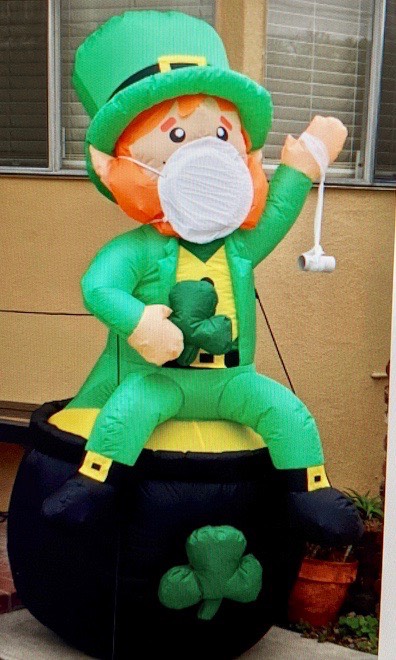 Before approaching the subject of the Irish and wine, let me dispel five myths about Saint Patrick. First, Patrick was British, not Irish (he was born in Britain to a deacon and tax collector, kidnapped at age 16 by marauders and forced into slavery in Ireland, escaping six years later). Second, Patrick had little mention of the shamrock in his writing and his connection with the shamrock was an embellishment that developed over time. Third, Patrick did not expel the snakes from Ireland (snakes never existed in Ireland). Fourth, Patrick revealed his personal story in only two letters he wrote later in life. Fifth, Patrick is not officially a Saint. He is a saint only in name and was never canonized by the Catholic church. He is a saint only by popular acclaim. The Irish have a long tradition of wine drinking as revealed by the writings of Saint Patrick in 433 A.D. where wine is given considerable mention. Although there is very little winegrowing in Ireland (it is simply to cold for Vitis vinifera grapes to prosper), the Irish have played a significant role in the founding of some of the most iconic wineries in France, Australia and the United States. The Irish helped launch the wine industry in California. Irishman James McCaffrey owned the oldest surviving commercial winery in California prior to Prohibition - the San Jose Winery - originally built by the Santa Barbara Mission in the early 19th century. The tradition continued in the late 19th century with the founding of the iconic Concannon Vineyard by Irishman James Concannon and in the 20th century, with Irish blood establishing such well-known California wineries such as Murphy-Goode, Chateau Montelena, Mayacamas, Cakebread and Flora Springs. I have a special place in my heart for Concannon Vineyard since it was the first winery I ever visited and the winery where I made my first purchase of a case of wine. Since I am primarily of Irish heritage ( my grandfather was born in Ireland and was among the criminals sent to Australia), I was drawn to this winery at a young age and it led to my early dalliances with Petite Sirah. My formative years with wine involved many bottles of Mateus, Lancers, Blue Nun and Spanada. After my medical training and stint in the USAF, I had enough spendable income to dabble in real wine. I was drawn to Petite Sirah because of its bold, sweet, blackberry jam flavors and black pepper spice. It seemed to be the perfect wine to pair with grilled steak, and in those days my cooking repertoire was largely limited to barbecuing steaks. I liked the taste of the masculine wine and as a young bachelor and identified with its machismo style. Petite Sirah was discovered by botanist, Dr. Francois Durif, in France in the 1880s. He found it growing in a field of Peloursin that had cross-pollinated with another grape varietal more recently identified as Syrah. In 1884, Charles McIver imported Durif to the United States for use in the vineyards of Mission San Jose in California calling it Petite Sirah upon arrival. Petite Sirah became the blending backbone of many homemade Prohibition-era wines. The grape has shown plenty of pluck. It survived phylloxera in the 1890s, both World Wars, the Depression and Prohibition (Concannon Vineyard was one of the few wineries that legally stayed in business because Petite Sirah was a main ingredient in sacramental wines). There were approximately 4,440 acres of Petite Sirah planted in the United States when James Concannon bottled America’s first varietally-labelled Petite Sirah in 1961. 50 years later, acreage had near doubled to 7,592 acres and 723 producers featured a Petite Sirah in their lineup of wines. James Concannon, born on Saint Patrick’s Day in Ireland, left his homeland in 1864 at the age of 17. He was an adventurous type who landed in Boston and eventually found a job as a bellhop at a hotel in Augusta, Maine. It was there he met and married an Irish lass, Ellen Rowe. In 1874, together with their new baby, the couple traveled in a covered wagon across the country to Oregon.
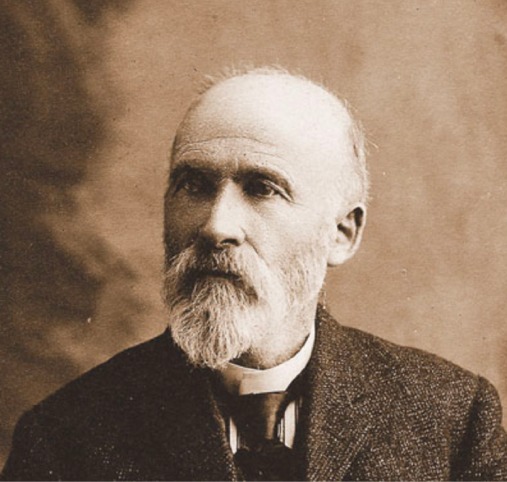 After initially managing a sheep ranch, James moved to San Francisco and made considerable money selling rubber stamps throughout the West. By age 32, he was a respected businessman, and his success allowed him to pursue his interest in viticulture. He enrolled in college to learn about grape growing and traveled to France to find rootstock. In 1883, he planted his first 40 acres in the Livermore Valley, east of San Francisco and founded the Concannon Vineyard winery. The cuttings were from ChËteau d’Yquem. A few years later, James became the first Irish immigrant to make wine in America. To this day, although many varietals are produced, Petite Sirah has remained the flagship wine for Concannon Vineyard and the winery offers several versions of Petite Sirah. Examples of old and new labels:
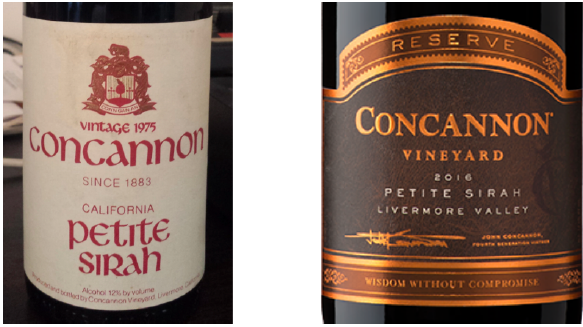 As an aside, I should note that 80% of all California Cabernet Sauvignon comes from Concannon clones 7, 8 and 11 that originated from a single mother vine imported from Bordeaux in 1893 by James Concannon. Today, there are a number of winery owners and winemakers of Irish heritage producing Pinot Noir. The list includes Kerry Murphy of DuMOL, Margie Williams of Brogan Cellars, Bill Murphy of Clos La Chance, Francis Mahoney of Carneros Creek Winery, Jim McMahon of Athair, David O’Reilly of O’Reilly’s and Owen Roe, and Peter Rosback of Sineann. David O’Reilly is one of the few Irish-born winemakers in the United States. His family fled Belfast at the height of that city’s friction between Catholic and Protestant factions in the late 1990s. The family settled in British Columbia before David headed south to California where he majored in college in philosophy, the perfect antecedent to a career in winemaking (ha!). While in California, David visited Oregon’s Willamette Valley and was smitten. He landed a job at Elk Cove Vineyards, where he befriended one of the seasonal assistant winemakers, Peter Rosback, who was also Irish. Together, they left Elk Cove Vineyards, with Rosback subsequently found Sineann (named after Ireland’s Shannon River) and O’Reilly launching Owen Roe (named after the famous Irish patriot who held off Cromwell’s army before being poisoned with some evil breakfast cereal). Along with partner Gerald Owen who manages the vineyards, O’Reilly crafts wildly popular Pinot Noir and other varietals sourced from fruit in Oregon and Washington. I have reviewed a number of Pinot Noirs from Tom Higgins, owner and winemaker at Heart & Hands Wine Company in the Finger Lakes region of New York. The Claddagh ring on the label is the traditional Irish wedding ring symbolizing friendship and togetherness (the hands), love (the heart) and loyalty and fidelity (the crown). It is worn by people of Irish descent the world over as a source of pride in their heritage. At Heart and Hands, the Claddagh symbolizes Tom and Susan Higgins’ passion for wine and their loyalty to their customers. To read more about the history of Ireland’s ties to wine I recommend the book written by Irish author Ted Murphy, A Kingdom of Wine.
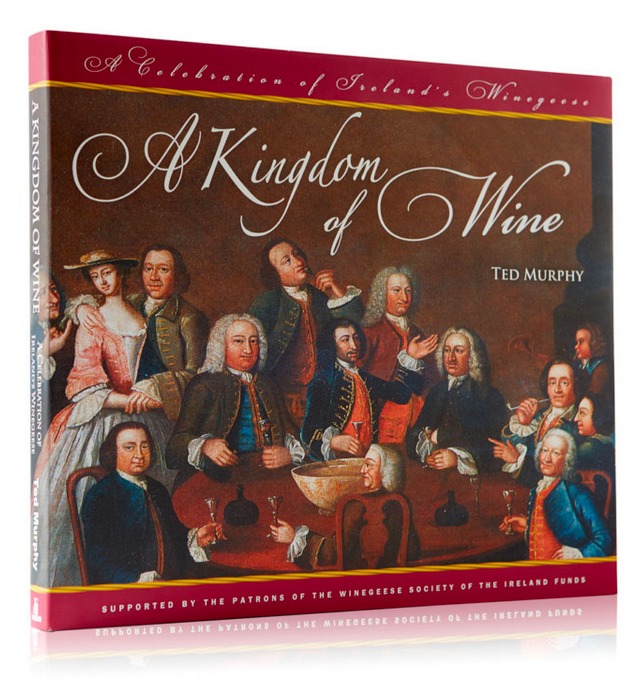
Matt Taylor Wines: Great Things Take Time
Matt Taylor
I first met winemaker Matt Taylor when he was crafting Pinot Noir and Chardonnay for Reuling Vineyard. The Reulings had previously sold fruit to Aubert Wines and Peter Michael Winery, but in 2011 decided to keep their fruit and start their own brand. They enlisted Matt, who had an impressive resume, as the winemaker. Matt has had winemaking experience at Joseph Swan Vineyards in the Russian River Valley, Domaine Dujac in Burgundy, wineries in Argentina and New Zealand and Araujo Estate Wines in the Napa Valley. When we met, we talked at length about his reverence for the Joseph Swan property, his dedication to organic and biodynamic farming, his preference for whole cluster fermentation and his general winemaking philosophy. In his career, he has traversed some extraordinary vineyards charged by dedicated farmers who steward some of the greatest terroirs in the world. All this travel and experience through 23 vintages has led him to embark on a project that has been nearly a decade in the making. Matt and his wife Mikaela are pictured below.
 Five years ago, he broke ground on two pristine parcels of land, located 4.5 miles inland from the Pacific Ocean on a ridge due west of the town of Occidental. The site is just down the road from where Matt was born and raised. He considers this area on the fringe of where grape growing is feasible in California. Matt also believes this is a special place where he can make wines that are transparent and unadulterated. The first parcel was planted in 2011 to the monarch of the Sonoma Coast: Pinot Noir and Chardonnay. Massale selections were sourced locally but their true identity will forever remain a mystery, This parcel is known as the Komorebi Vineyard because the 6.25-acre vineyard is in close proximity to sequoia trees. In Japanese, the word “Komorebi” means “sunlight filtered through the leaves of trees.”. Soils are Goldridge fine sandy loam. The second and larger parcel of the two will be planted to Loire varietals (Chenin Blanc, Cabernet Franc, Gamay, Pineau d’Aunis, Groileau, Romorantin and Menu Pineau) whose source was smugg…, er, less local. The vines are dry-farmed organically and biodynamically. The site’s extremely long growing season and cool climate combined with high-density plantings (3,600 vines per acre versus the more typical 1,800 vines per acre in California) allows the grapes to achieve “skin maturity” and a natural acidity that is less common than you’d expect in California. Matt released the inaugural 2016 vintage of Matt Taylor Wines Komorebi Vineyard West Sonoma Coast Pinot Noir and 2017 vintage of Matt Taylor Wines Komorebi Vineyard West Sonoma Coast Chardonnay on March 3, 2020. These wines are neither fined or filtered with nothing added to the Chardonnay and a minuscule amount of sulfur put into the Pinot Noir. The entire small production sold out in less than a week to a mailing list. The wines were released as a 3-pack (2 Pinot Noir and 1 Chardonnay) priced at $213. For those that missed the debut release, sign up for the allocation list at www.matttaylorwines.com. This fall, a small release of a second cuvée of Pinot Noir from the Komorebi Vineyard will be offered. The striking labels are an attempt to paint specific colors to reflect something of a tasting note for the wine. In the case of Chardonnay, there is a stroke of yellow to signify the citrus and fruit notes, a secondary moss green brush stroke to show the green aspect of the wine (not green like herbaceous or lime or green apple but more like ocean/saline and pine and moss), and then, a third component that signified the floral element. The colors for Pinot Noir were orange, light blue and blue-green. Each bottle is hand-painted so is unique and slightly different from each other.
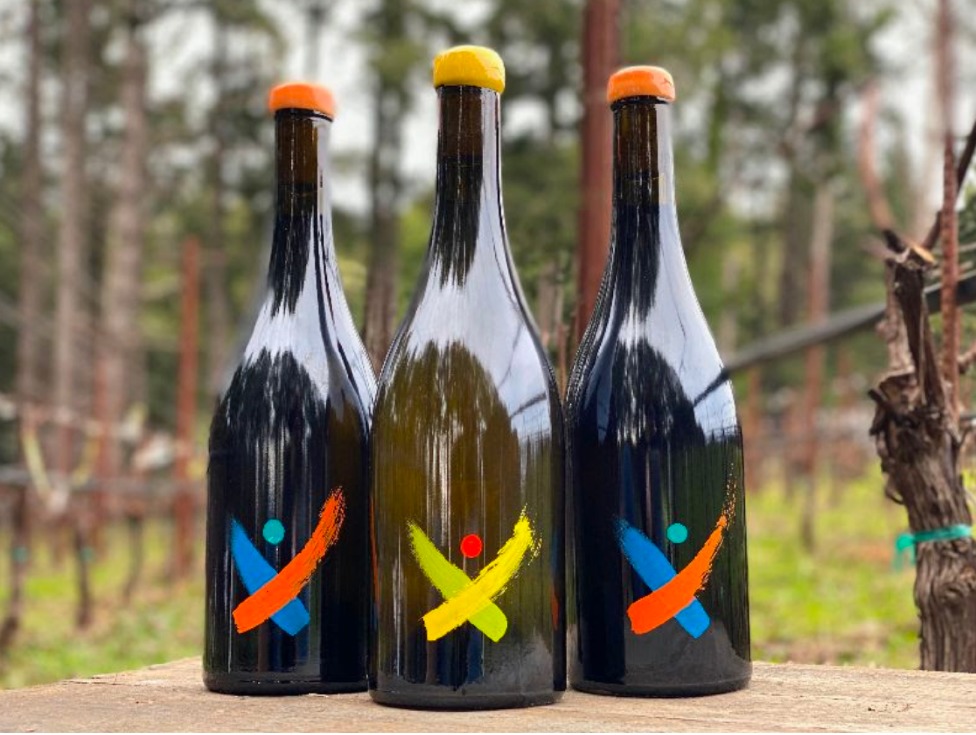
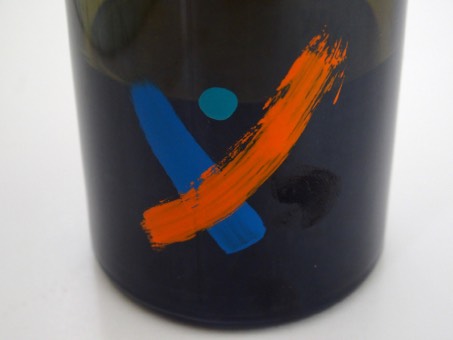 2016 Matt Taylor Wines Komorebi Vineyard West Sonoma Coast Pinot Noir 13.11% alc., pH 3.33, TA 0.84, 230 cases. This vintage provided incredible skin maturity at lower sugar levels, and the stems, despite being neon green in color, were very sweet and ripe and not green in flavor. Hand-harvested and hand-sorted (harvested before the Sonoma County fire in early October). 100% whole cluster in two tanks: one oak and the other concrete. Both tanks were a co-ferment with native yeasts of the three selections in the vineyard. The grapes were in tank 27 days which included a period of extended maceration. The free-run and press wine were kept separate and sent to 228L and 600L barrels (2.5x the size of a normal barrel and having wood staves that are over 1.5x as thick) on the lees for 18 months of aging. 3 months prior to bottling, the wine was moved to tank and received 20 ppm of sulfur. · Light garnet color in the glass. The whole cluster driven nose offers aromas of burnt tobacco, pine sap, sweet pipe smoke and dried leaf elements. Elegantly styled in a light to mid-weight fashion, the wine offers flavors of red cherry and cranberry with a botanical underpinning. Fine-grain, slightly gritty tannins are well proportioned. An arrow of acidity contributes freshness and a piquant finish. More likeable over time in the glass, gaining succulence. Even more enjoyable when tasted the following day from a previously opened and re-corked bottle when the wine displayed more expressive fruit, better acid integration and overall more harmony. Score: 93
2016 Matt Taylor Wines Komorebi Vineyard West Sonoma Coast Chardonnay 12.25% alc., pH 3.22, TA 0.85, 160 cases. Harvested before the Sonoma County fire in early October. Clusters are tight and tiny. The wine was pressed whole cluster in a bladder press, fermented and aged in an 18HL concrete egg. Bottling proceeded without sulfur addition after 11 months in concrete sur lie. · Moderately light yellow in color with the slightest haze. Engaging aromas of lemon curd, tarte tatin and salted caramel that are persistent. The flavors replicate the aromas with the addition of orchard fruits and baked green apple. Very appealing with good freshness, a sleek mouthfeel and the slightest salinity. A very tantalizing wine that has well-integrated, crisp acidity and a pleasing lemony finish. Still terrific when tasted the following day from a previously opened and re-corked bottle. The West Sonoma Coast may be the Holy Grail for California Chardonnay. Score: 94
Alma Fria: West Sonoma Coast Wines by Former Red Car Co-Founder Carroll Kemp
The 2.56-acre Holtermann Vineyard, located just north of Annapolis (population 200), was acquired in 2012. It had been planted in 2002 to Pinot Noir clones 115, 777, “828,” and Pommard. The site is positioned on a remote ridge top 5 miles inland from the Sea Ranch coastal community at an elevation of 700 to 800 feet. Pinot Noir has been offered from the Holtermann Vineyard and the Doña Margarita Vineyard, with Doc’s Ranch Vineyard replacing Doña Margarita Vineyard as a source in the 2017 vintage. Chardonnay is sourced from Campbell Ranch Vineyard. The Campbell Ranch Vineyard was originally planted in 2001 solely to Pinot Noir. In 2008, Carroll brought Old Wente cuttings from the Hyde Vineyard and grafted 1.28 acres to Chardonnay, while interplanting some additional vines. I have reviewed the Alma Fria Sonoma Coast wines very favorably since the inaugural vintage in 2012: www.princeofpinot.com/winery/2424/ Alma Fria is a member of the West Sonoma Coast Vintners Association. That organization has submitted a proposal to the TTB to become an American Viticultural Area (AVA) and distinguish itself from other regions of the vast Sonoma Coast AVA. Confirmation of an official AVA is expected soon. Alma Fria Pinot Noir and Chardonnay are offered to a mailing list at www.almafria.com.
2017 Alma Fria Plural Sonoma Coast Pinot Noir 13.5% alc., 250 cases, $40. · Moderately dark garnet color in the glass. The nose offers an array of aromas including dark berries, underbrush, moss and rose petal. Midweight plus in style with a charge of purple and black berry fruits that flood the mouth with goodness. There is a noticeable spice, floral and botanical character as well. A modest amount of tannin shows up on the finish over time. Score: 89
2017 Alma Fria Doc’s Ranch Vineyard Sonoma Coast Pinot Noir $70. One of the coolest vineyard sites in all of Sonoma County. Vineyard is named after “Doc” Van Alstyne, a long-time resident and former landowner of acreage encompassing this ridge in Occidental (including the parcels where this vineyard is located). the vineyard was planted in 1999 and 2010 and totals 9 acres (8 acres of Pinot Noir and 1 acre of Chardonnay). Elevation rises to nearly 1,000 feet above sea level giving a view of the Pacific Ocean and Pt. Reyes seashore. · Moderate garnet color in the glass. Exuberant aromas of wild strawberry and forest floor initially. The fruit expression veers toward boysenberry, blackberry and pomegranate in a mid-weight style. Impressive harmony, with a satiny mouthfeel and a persistent finish. More aromatic and appealing when tasted the following day from a previously opened and re-corked bottle. Score: 92
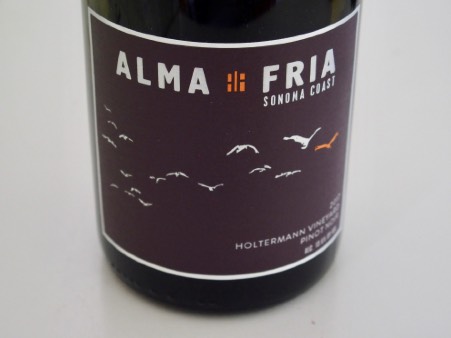 2017 Alma Fria Holtermann Vineyard Sonoma Coast Pinot Noir 13.6% alc., 140 cases, $70. Clones 115, 777, “828,” and Pommard 5. 20% whole cluster, native yeast fermentation. Aged in French oak barrels, 25% new. · Moderate garnet color in the glass. The most alluring nose in the 2017 lineup, offering scents of blackberry syrup, leather and redwood, gathering ebullience over time in the glass. Somewhat rich in concentration in a nearly full-bodied style with a core of black cherry and cassis flavors underlain by notes of wild herbs, and framed by harmonious tannins and acidity. A wine of sophisticated composure with a fruit-laden finish that goes on and on. Still superb when tasted the following day from a previously opened and re-corked bottle. Score: 94
2017 Alma Fria Plural Sonoma Coast Chardonnay 13.3% alc., 175 cases, $40. Sourced from Campbell Ranch and Joyce vineyards. Clones are Hyde Old Wente and 15. Wild yeast fermented, aged in 100% neutral French oak barrels. · Moderate golden yellow color in the glass with a slight haze. Inviting aromas of pineapple, lemon curd and warm pastry. Fairly rich and heady flavors of lemon, pineapple, butterscotch and caramel with a slightly sweet lemon meringue fueled finish. A showy, ripe-fruited style. Score: 90
2017 Alma Fria Campbell Ranch Vineyard Sonoma Coast Chardonnay 13.3% alc., 115 cases, $50. · Wild yeast barrel fermented in 25% new French oak. Moderate golden yellow color in the glass with a slight haze. Refined aromas of citrus, baked pear and nut oils. A very polished wine in the mouth with focused flavors of lemon, pear, yellow peach and warm croissant that leave you wanting another sip. Impeccable harmony and class with a noticeably long finish. A much more refined wine than the 2017 Plural Chardonnay. Score: 95
2016 Alma Fria Plural Sonoma Coast Pinot Noir 13.2% alc., 280 cases, $40. · Moderately dark garnet color in the glass. The nose features primarily earthy flora aromas with a note of cherry Danish pastry. More earthy than fruity on the palate with middleweight flavors of black cherry, dried herb seasoning and mushroom. Modest tannins for upfront enjoyment, with a slightly tart cranberry finish. Score: 88
2016 Alma Fria Doña Margarita Vineyard Sonoma Coast Pinot Noir 13.0% alc., 145 cases, $70. This vineyard is located in the tiny hamlet of Freestone, 7 miles inland from the Pacific Ocean and exposed to the ingress of fog from Bodega Bay. It offers a very cool microclimate. Planting began in 2002 to clones 115 and Pommard. Goldridge fine sandy loam soil. 15% whole cluster, wild yeast fermented, aged in 30% new French oak barrels. · Moderately dark garnet color in the glass. Aromas of blackest cherry, tobacco, spice and oak. Midweight flavors centered on black cherry with a citrus note in the background. Pleasant, but not exciting, with suede tannins, and nervy acidity that makes its presence felt. The finish has a sweet and sour tone. Score: 88
2016 Alma Fria Holtermann Vineyard Sonoma Coast Pinot Noir 13.3% alc., 140 cases, $70. Clones 115, 777, “828,” and Pommard 5. 15% whole cluster, wild yeast fermentation. Aged in French oak barrels, 25% new. Moderately dark garnet color in the glass. · Nicely perfumed with aromas of red and black cherry and spice cake. The essence of cherry and dark raspberry fruits exude an aura of pleasure. A arrow of acidity is woven into the fabric of the wine and a compliment of oak plies the background. The wine picks up interest and body with time in the glass, and offers a long and exuberant finish. Score: 93
2016 Alma Fria Plural Sonoma Coast Chardonnay 13.2% alc.,185 cases, $40. · Moderate golden yellow color in the glass. Initial aromas of ripe pineapple, pear and lemongrass fade over time. Rather mundane, with flavors of pineapple, yellow peach, roasted nuts and caramel, shot through with steely acidity. Score: 87
Briefs
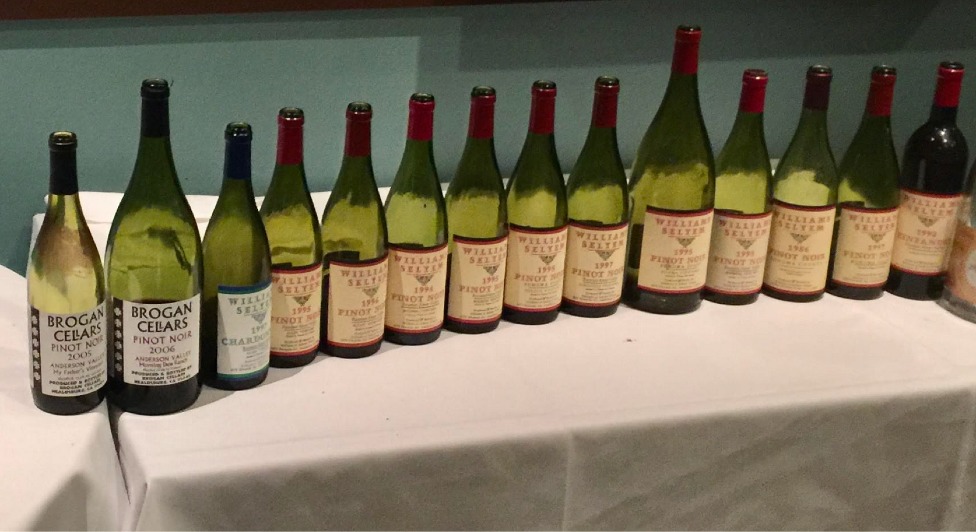 Big Table Farm Needs a Bigger Table I first met Clare and Brian, founders of Big Table Farm, in 2010 at a Pinot Days event in Santa Monica when they were hardly a blip on the pinotphile’s radar (photo below). Since then, they have enjoyed incredible success based on the excellence of their wines and their farm-based experience available to those who have visited them in Gaston, Oregon. They are still amazed, humbled and grateful for the success of their Oregon adventure. Up until recently, they have held tastings in their old farmhouse but now have leased a building in Carlton to serve as the public tasting venue for Big Table Wine and Clare’s art (see photo below). Last year, they hosted over 2,500 people at their farmhouse and the opening of a public facility will restore some sanity to their lives. Brian remarked that he has had a ladder outside of his office window at home so he could move in and out of the house freely. Tasting at the Carlton Atelier will be by appointment. Currently, the land is being prepared on the home property to plant Pinot Noir and Chardonnay in the spring of 2021. Solar panels have been added to the winery along with backup batteries to complement the Chevy Bolt electric forklift and the Polaris electric ATV. I have reviewed the Big Table Farms wines for years with much fanfare. The winery has just released the fall lineup of Chardonnay and Pinot Noir. Reach out by sending an email to admin@bigtablefarm.com or call 503-852-3097.
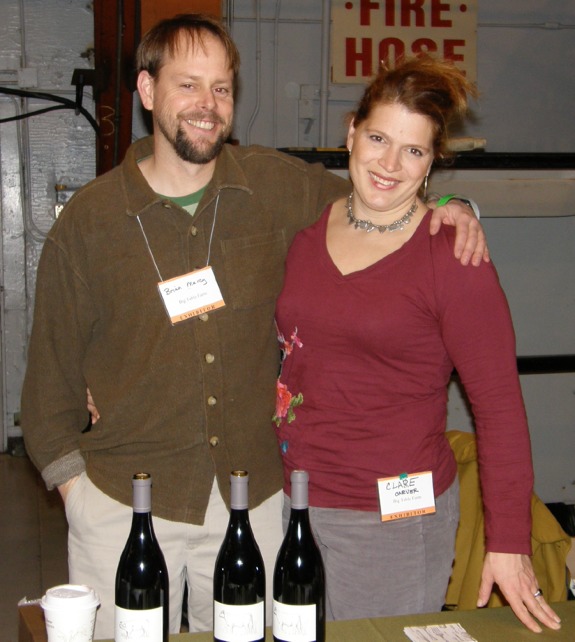
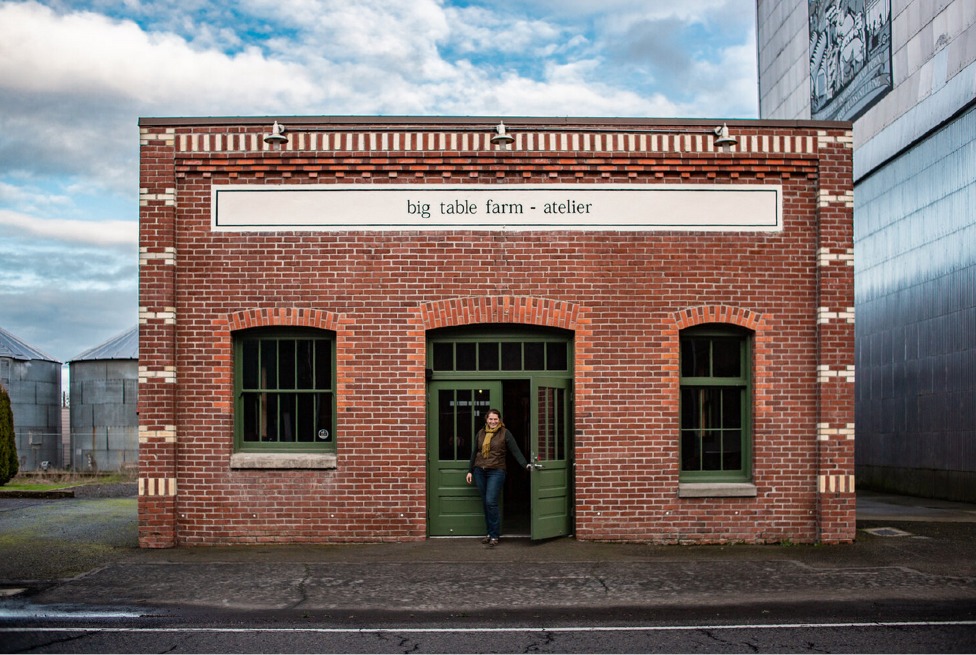 New Direction for ConeTech The Craft Beverage Modernization portion of the Tax Cuts and Jobs Act of 2017 was extended to December 31, 2020. The Act authorizes a wine tax rate of $1.07 per wine gallon to still wines containing not more than 16% alcohol. There was previously a tax increase for still wines having more than 14% alcohol. The Act was a devastating blow to the alcohol reduction business of ConeTech but the company has moved on. ConeTech is now offering zero alcohol wines as a bulk finished product allowing clients to produce ZeroZero Wines. Billed as the new “sophisticated soft drink,” ZeroZero wine is an alternative to sweet traditional soda. ConeTech says, “You have all the wine flavor, balance, structure and mouthfeel with none of the alcohol.” The ZeroZero beverages also possess much lower calories than most leading soft drinks. A second new offering is smoke taint removal. ConeTech has for the first time in the United States identified the compounds that cause smoke taint. This has lead to the development of a unique and proprietary method that drastically reduces, or eliminates completely, the volatile components that lead to smoke tainted wines. Reportedly, the wine’s most delicate aromatic compounds are preserved. The key facts about smoke taint (courtesy of Wine Australia): (1) smoke affects the grapes, not the vines, (2) there is no carry over between seasons, (3) the risk is greatest closest to harvest, (3) proximity and age of smoke affect the level of risk, and (4) characteristics of smoke in wine change over time and are experienced differently by each individual. Knudsen Vineyards to Take Back Erath’s Tasting Room For 33 years, the historic Erath Winery has been a tenant at Knudsen Vineyards, operating their business in the middle of the Knudsen Vineyard. As the lease expires at the end of March, the space will be transformed into a Knudsen Vineyards tasting room, slated to open in late May or early June. Knudsen Vineyards below.
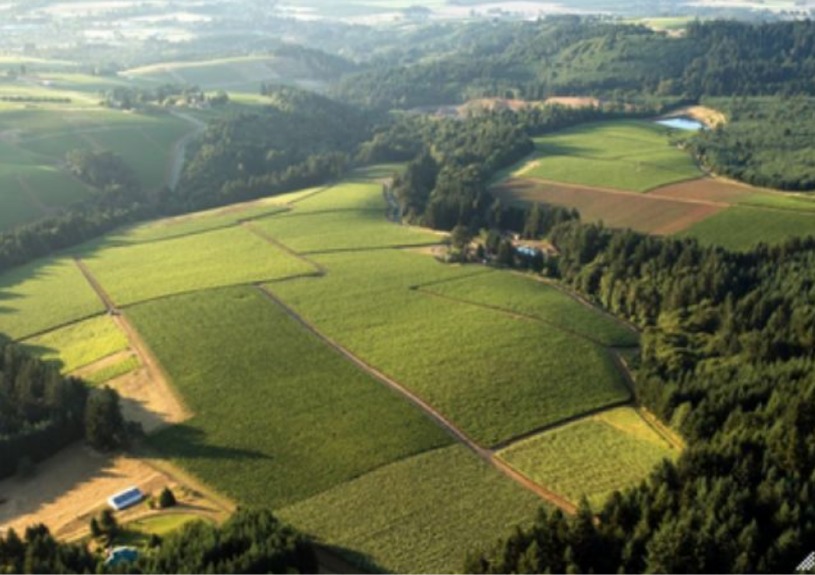 “Minerality” Confined to Pinot Noir? I continue to be perplexed about the use of the word “minerality” and its variants in the reviews of Pinot Noir in the popular wine publications. I wrote about this recently in Volume 12 Issue 2: www.princeofpinot.com/article/2227/. In the April 30, 2020 issue of the Wine Spectator, there were several California Pinot Noir wines reviewed. The following descriptors appeared: “minerally finish,” (twice), “minerality,” “vibrant minerality,” and “ minerally details.” Similar terminology did not appear in reviews of California Grenache, Syrah & Blends and Other Reds. Is Pinot Noir so confounding to describe that reviews must lean on the vague and poorly understood terms implying “minerality”? Wine.com as an Internet Source of Premium California Pinot Noir I had never looked to wine.com as an internet source for fine California Pinot Noir but while recently searching for a specific Pinot Noir, I came upon this seller. I was impressed by the extensive listing of quality California Pinot Noir wines from both current and recent vintages. I looked at a number of wines that I had reviewed highly and compared the SRP for my rated wines with wine.com prices. In most cases, the prices were at or modestly above SRP but there were some good values to be found with prices below SRP in some wines (marked with an asterisk). Here is a listing that may assist you in shopping for wines that I have reviewed highly in the past. My score is first, SRP second and the wine.com price is listed last.
2017 Domaine Della Earl Stephens Vineyard Russian River Valley Pinot Noir 93, SRP $75, $84.99
Review of ‘Sideways’: The Experience’ in The New York Times ‘Sideways: The Experience’ is the stage adaptation of the novel is playing at the Theater at St. Clement’s in New York until May 24, 2020. The play is preceded by a cocktail party at the Theater (an extra $100) with appetizers and wines reflecting those tasted in the novel. The reviewer, Alexis Soloski, said the play was “corked.” “Observation is shoved into dialogue like a stepsister trying to stuff her feet into too-small shoes.” She felt the movie worked much better than the play, and in summary, claimed, “Some stories, unlike fine wines, don’t age well.” Ouch! |